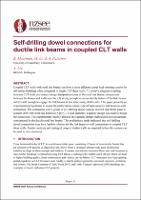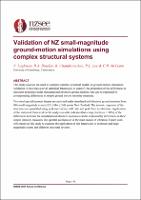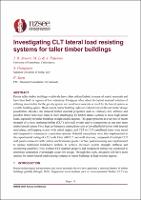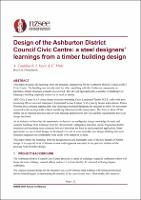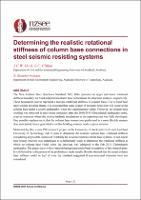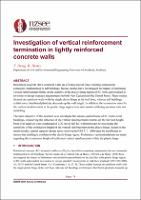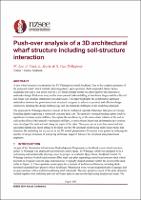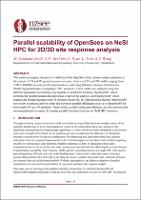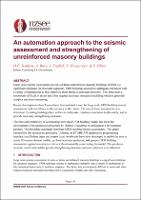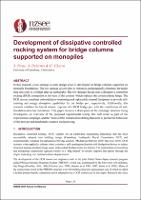Search
Now showing items 1-10 of 18
Self-drilling dowel connections for ductile link beams in coupled CLT walls
(New Zealand Society for Earthquake Engineering, 2021-04-14)
Coupled CLT walls with steel link beams can form a more efficient lateral load resisting system for tall timber buildings when compared to single CLT shear walls. To achieve adequate coupling between CLT walls and ensure ...
Validation of NZ small-magnitude ground-motion simulations using complex structural systems
(New Zealand Society for Earthquake Engineering, 2021-04-14)
This study assesses the need to consider complex structural models in ground-motion simulation validation. It develops a novel statistical framework to quantify the proportion of the differences in structural responses ...
Investigating CLT Lateral Load Resisting Systems for Taller Timber Buildings
(New Zealand Society for Earthquake Engineering, 2021-04-14)
Recent taller timber buildings worldwide have often utilized hybrid systems of mixed materials and have been built in regions of low seismicity. Designers often adopt the hybrid material solution of utilizing mass timber ...
Design of the Ashburton District Council Civic Centre: A steel designers' learnings from an engineered timber building design
(New Zealand Society for Earthquake Engineering, 2021-04-14)
This paper discusses the learnings from the structural engineering for the Ashburton District Council (ADC) Civic Centre. The building was initially steel but after consulting with the Ashburton community an alternative ...
Determining the realistic rotational stiffness of column base connections in steel seismic resisting systems
(New Zealand Society for Earthquake Engineering, 2021-04-14)
The New Zealand Steel Structures Standard, NZS 3404, provides an upper and lower rotational stiffness boundary for fixed and pinned column base connections for structural analysis, respectively. These boundaries aim to ...
Investigation of vertical reinforcement termination in lightly reinforced concrete walls
(New Zealand Society for Earthquake Engineering, 2021-04-14)
Reinforced concrete (RC) structural walls are effective lateral force-resisting components commonly implemented in tall buildings. Recent studies have investigated the impact of minimum vertical reinforcement limits on the ...
Push-over analysis of a 3D architectural wharf structure including soil-structure interaction
(New Zealand Society for Earthquake Engineering, 2021-04-14)
A new wharf structure was proposed for Te Wānanga in central Auckland. Due to the complex geometry of the proposed wharf, which included plan irregularity, open apertures, deck-suspended planter boxes, suspended nets and ...
Parallel scalability of OpenSees for 2D and 3D ground response analysis problems
(New Zealand Society for Earthquake Engineering, 2021-04-14)
This study investigates the parallel scalability of the OpenSees finite element analysis platform in the context of 2D and 3D ground response analyses. A series of 2D and 3D models ranging from 7500 to 480000 elements are ...
An automation approach to the seismic assessment and strengthening of unreinforced masonry buildings
(New Zealand Society for Earthquake Engineering, 2021-04-14)
Large scale seismic assessments in areas of dense unreinforced masonry buildings (URM) is a significant challenge for structural engineers. URM buildings respond to earthquake excitation with a variety of mechanisms as ...
Development of Dissipative Controlled Rocking Bridge Columns on Monopile Foundations
(New Zealand Society for Earthquake Engineering, 2021-04-14)
In this research, a low-damage seismic design detail is developed for bridge columns supported on monopile foundations. The low-damage system aims to minimise, and potentially eliminate, the repair time and costs to a ...

